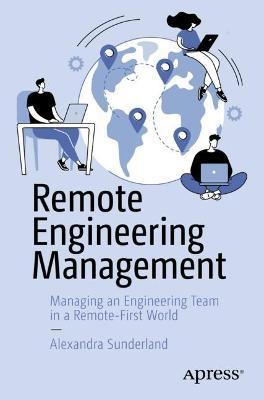Remote Engineering Management: Managing an Engineering Team in a Remote-First World

Remote Engineering Management: Managing an Engineering Team in a Remote-First World
Chapter 1: Defining "remote"To set a base of understanding across all readers, we'll start by explaining what hybrid and remote setups are, how they differ, and the different variations of both environments.- Hybrid- Remote
Chapter 2: HiringWe're starting off with hiring because that's the first part of the new employee lifecycle (engaging with thecompany before they work there). This is something that's tricky to get right no matter what the environment, but there are a lot of nuances specific to remote work that are incredibly important to know about in order tobe successful with it.- The screening call- The panel interview- What to do when technology fails- A new set of biases
Chapter 3: OnboardingThis is the next step in the employee lifecycle, so a logical follow-up to hiring in the previous chapter.Onboarding is something I care deeply about, and I talk about all of the thought and care required to make it agood experience for new hires.- Preparing before the first week- The first week- Going forward
Chapter 4: MeetingsWe go over how to run great meetings in a remote setting, and specifically go over certain types of meetingswhere the techniques can be carried over to any other type of meeting. These are the most expensive toolsavailable for managers to communicate, so they're very important to get right.- How to run a virtual meeting- Running retrospectives- Team building- One-on-ones- The "stand-up"
Chapter 5: DeploysDeploying code is one of those highly process-oriented tasks that all engineers run through often, but littlethought is put into anything other than the technical aspect of it. This chapter covers the human emotionsinvolved in deploys, and how to manage them to make sure each deploy goes smoothly.- Making sure everyone is on the same page- Managing the emotional chaos of deploys
Chapter 6: Communication strategiesOne of the most questioned part of remote work, is how will you stay in touch with your team and knowwhat's going on? It must be impossible without sitting next to them! That's not the case, and this chapterexplains how to go about communication as a team to make sure everyone's always on the same page.- Staying updated- Types of calls- Video on or off?- The benefits of voice-only- Embracing async
Chapter 7: Feedback & promotionsAt least once a year, giving thoughtful feedback and putting people up for promotions is a manager's full-timejob. If you aren't paying attention throughout the year, this
PRP: 461.92 Lei
Acesta este Prețul Recomandat de Producător. Prețul de vânzare al produsului este afișat mai jos.
415.73Lei
415.73Lei
461.92 LeiLivrare in 2-4 saptamani
Descrierea produsului
Chapter 1: Defining "remote"To set a base of understanding across all readers, we'll start by explaining what hybrid and remote setups are, how they differ, and the different variations of both environments.- Hybrid- Remote
Chapter 2: HiringWe're starting off with hiring because that's the first part of the new employee lifecycle (engaging with thecompany before they work there). This is something that's tricky to get right no matter what the environment, but there are a lot of nuances specific to remote work that are incredibly important to know about in order tobe successful with it.- The screening call- The panel interview- What to do when technology fails- A new set of biases
Chapter 3: OnboardingThis is the next step in the employee lifecycle, so a logical follow-up to hiring in the previous chapter.Onboarding is something I care deeply about, and I talk about all of the thought and care required to make it agood experience for new hires.- Preparing before the first week- The first week- Going forward
Chapter 4: MeetingsWe go over how to run great meetings in a remote setting, and specifically go over certain types of meetingswhere the techniques can be carried over to any other type of meeting. These are the most expensive toolsavailable for managers to communicate, so they're very important to get right.- How to run a virtual meeting- Running retrospectives- Team building- One-on-ones- The "stand-up"
Chapter 5: DeploysDeploying code is one of those highly process-oriented tasks that all engineers run through often, but littlethought is put into anything other than the technical aspect of it. This chapter covers the human emotionsinvolved in deploys, and how to manage them to make sure each deploy goes smoothly.- Making sure everyone is on the same page- Managing the emotional chaos of deploys
Chapter 6: Communication strategiesOne of the most questioned part of remote work, is how will you stay in touch with your team and knowwhat's going on? It must be impossible without sitting next to them! That's not the case, and this chapterexplains how to go about communication as a team to make sure everyone's always on the same page.- Staying updated- Types of calls- Video on or off?- The benefits of voice-only- Embracing async
Chapter 7: Feedback & promotionsAt least once a year, giving thoughtful feedback and putting people up for promotions is a manager's full-timejob. If you aren't paying attention throughout the year, this
Detaliile produsului










